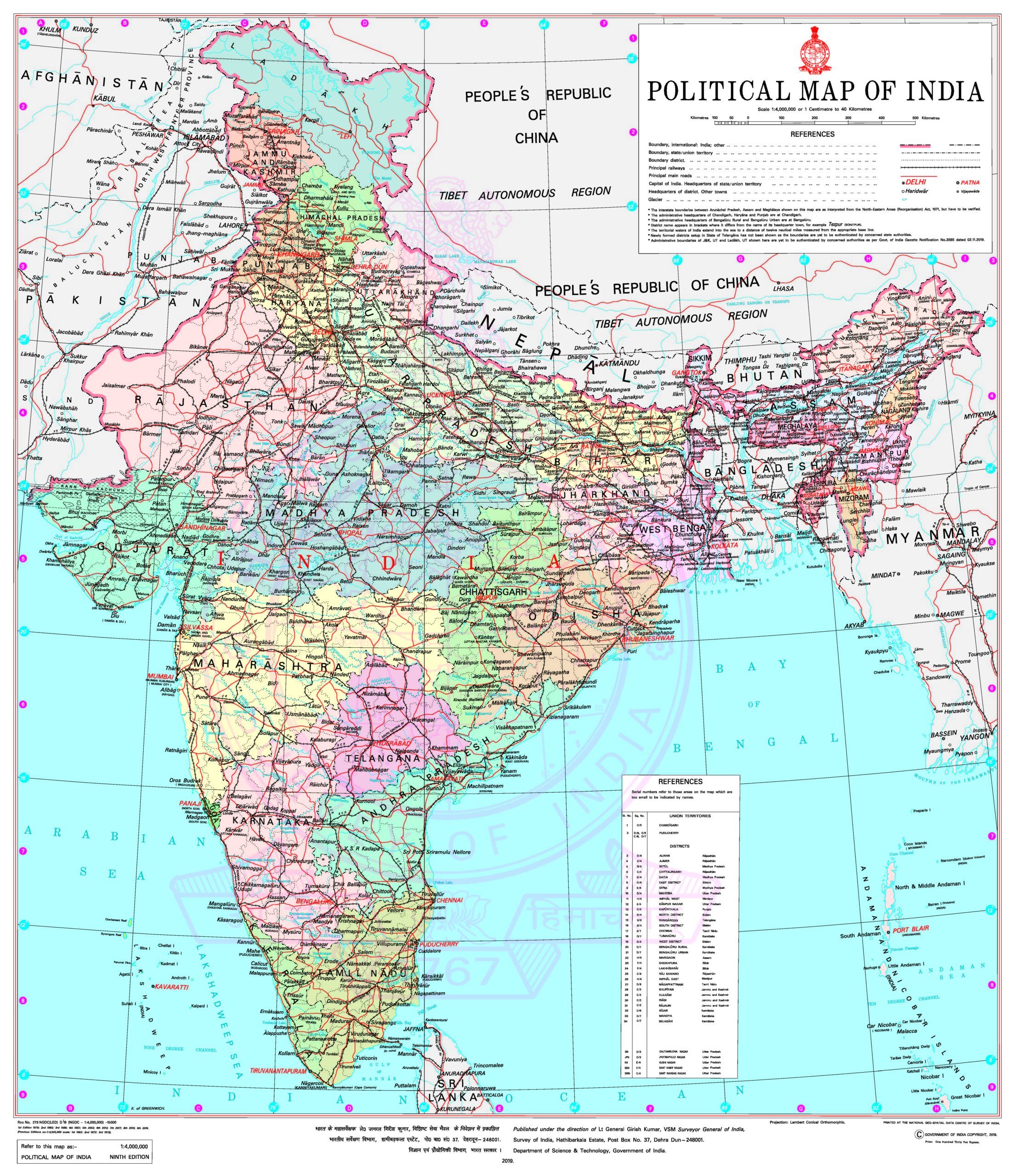
The Future of GIS
 Everyone who works in geographic information science understands the value of knowing precisely where you’re headed. But the future of GIS presents endless possibilities through innovative technology and approaches. Geospatial methods have already brought dramatic transformation to data collection and strategic planning in fields from real estate to humanitarian relief. What happens next depends on the qualified professionals and the organizations that implement a growing array spatial tools for a wide spectrum of applications.
Everyone who works in geographic information science understands the value of knowing precisely where you’re headed. But the future of GIS presents endless possibilities through innovative technology and approaches. Geospatial methods have already brought dramatic transformation to data collection and strategic planning in fields from real estate to humanitarian relief. What happens next depends on the qualified professionals and the organizations that implement a growing array spatial tools for a wide spectrum of applications.
GIS practitioners can prepare by considering some vital questions:
- Which existing GIS trends will shape tomorrow’s careers?
- What technical advances are on the way to revolutionize the field?
- How can GIS experts leverage spatial data to solve new problems?
A future-focused education in GIS or geospatial intelligence can equip professionals to advance their careers and make crucial discoveries. The University of Southern California’s Spatial Sciences Institute is dedicated to teaching students the skills to confront emerging challenges. Here’s what you need to know about the opportunities around the corner.
Today’s Most Promising GIS Trends
Predicting what’s to come for spatial problem-solving starts with considering the trends currently making an impact in the discipline. Recent developments in gathering and analyzing geographic information have broadened the discipline’s horizons and led to powerful insights for businesses, government agencies, humanitarian organizations and the military.
In all of these contexts, the rise of robust data analytics tools and methods brought pervasive shifts in how professionals approach complex issues. Today’s analytics-focused organizations harness big data to set goals, strategize, prevent fraud, evaluate the likely outcomes of initiatives and more. Organizations incorporate GIS into decision-making processes, tasking experts with generating compelling reports and visualizations that allow stakeholders to make informed decisions. For example, a manufacturer may monitor the locations of people and equipment involved in production and shipping operations to determine whether it’s necessary to expand its facilities or streamline its processes.
Meanwhile, growing possibilities for real-time data collection have led to seismic shifts in the GIS field over the past several years. Findings from traditional remote sensing sources like satellite imagery or aerial photography can be frequently updated and further fleshed out with details from emerging sources such as mobile devices and social media. In turn, up-to-date geospatial information speeds responses to natural disasters and humanitarian crises and fuels location-based services like ride-hailing, mobile workforce management and proximity marketing.
Thanks to this ever-increasing volume of readily available geographic data, open-source mapping has become a crucial part of how businesses function and individuals get around. Projects like OpenStreetMap revealed the advantages of involving a large community in submitting spatial data by synthesizing input from GPS devices, aerial imagery and field maps. A map can thus offer access to highly detailed local information, assist multinational corporations striving to connect with customers in a specific area or offer intelligence to aid workers monitoring dangerous situations from a distance.
What’s Next in GIS Technology?
Geospatial perspectives have reshaped how we understand the world around us, and the next wave of GIS software applications and techniques is on its way. When organizations embrace geographic information as a key component in their data strategies, professionals are able to explore fascinating questions and deliver meaningful results.
GIS application development stretches the boundaries of what we can do with spatial information. Fresh approaches to building software programs for use on the web or mobile devices continue to proliferate, facilitated by widely available GIS APIs and open-source maps. The resulting apps can educate government agencies and the public about a region’s history of natural disasters, show healthcare professionals the best ways to serve a region’s population or teach travelers about nearby landmarks and hiking trails. As more developers adopt 3D GIS tools, these representations will include layers with unprecedented levels of detail that deepen our awareness of geographic data’s relevance.
GIS plays a central role in the Internet-of-Things as organizations use sensors to collect information, including spatial data, from a growing array of devices. These observations can be applied for purposes like improving customer engagement in stores and identifying inefficiencies and hazards in the electrical grid. Accurate geolocation allows stakeholders to track outcomes across supply lines and throughout multiple facilities.
In addition, retailers and game studios have demonstrated the possibilities of location-based augmented reality, employing mobile devices to superimpose virtual elements on the physical world. Geographic precision and up-to-date locational information make a major difference in the richness of an AR app—being directed to visit a place of business that’s recently closed, for instance, can be devastating for immersion. Ongoing improvements to the platforms and software we use to participate in these experiences will likely make the connections between geographic data and the places we visit more involving and responsive.
Autonomous vehicles represent some of the most promising chances for GIS to affect entire industries and our everyday lives. Self-driving cars and trucks perceive the world through various combinations of radar, lidar and cameras, using the input from multiple sources to generate 3D maps for navigation and to avoid obstacles. GIS calculates the fastest route to a destination and provides machine learning systems with extensive, current information about road conditions and traffic. Those details can make a big difference in getting a driverless car safely to its destination, especially when weather causes low visibility.
Prepare to Excel in the Future of GIS
A peek into the future of the GIS industry can help you plan for career advancement in rapidly evolving fields like:
- Data acquisition and analysis
- Spatial data analysis and visualization
- Software development
- Geospatial intelligence
- Remote sensing
Leaps in technology from organizations committed to data-driven strategy will open new avenues for specialists to succeed in leadership roles. But to make the most of these possibilities, you need to master the latest tools and be prepared to capture the full potential of spatial information.
In online programs from USC’s Spatial Sciences Institute, you can develop the knowledge to guide projects in GIS or human security and geospatial intelligence (HGSI). As a home for leading-edge research, USC features courses taught by some of the top thinkers in the field, synthesizing conceptual knowledge with hands-on experience. Students can choose from a variety of programs that fit their career objectives:
Online GIS Master’s Degrees
- Master of Science in Geographic Information Science and Technology
- Master of Science in Human Security and Geospatial Intelligence
Online GIS Graduate Certificates
- Graduate Certificate in Geographic Information Science and Technology
- Graduate Certificate in Geospatial Intelligence
- Graduate Certificate in Geospatial Leadership
- Graduate Certificate in Remote Sensing for Earth Observation
The future of GIS depends on inventive thinking from capable problem-solvers. USC partners with leading researchers, businesses, nonprofits and non-government organizations to give professionals the background they need to pursue roles at the forefront of the field. Students investigate topics influencing the next generation of GIS solutions like geospatial analysis, application development and HSGI.
Our students don’t just discover where GIS is headed; they become proactive participants in realizing the power of spatial information across all disciplines and industries.






 India’s collection and use of geospatial data have increased exponentially in the last few years. With the central government’s push toward smart cities and massive infrastructure development taking place across the nation, various government organizations are leveraging remotely-sensed, location-specific data in major national programs. However, in the absence of an integrated national geospatial policy, the country has not been able to exploit the full potential of this transformative technology.
India’s collection and use of geospatial data have increased exponentially in the last few years. With the central government’s push toward smart cities and massive infrastructure development taking place across the nation, various government organizations are leveraging remotely-sensed, location-specific data in major national programs. However, in the absence of an integrated national geospatial policy, the country has not been able to exploit the full potential of this transformative technology.